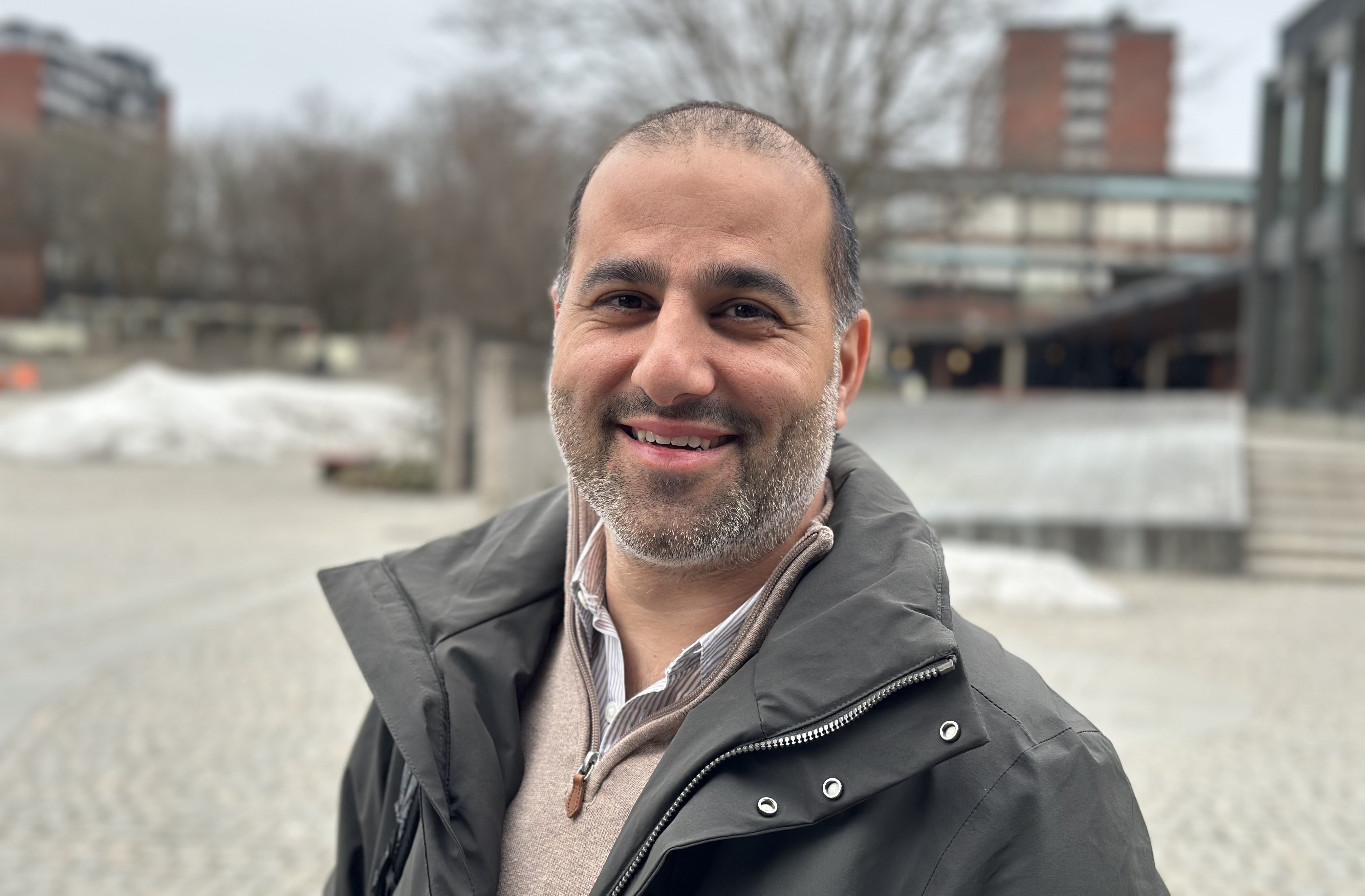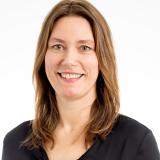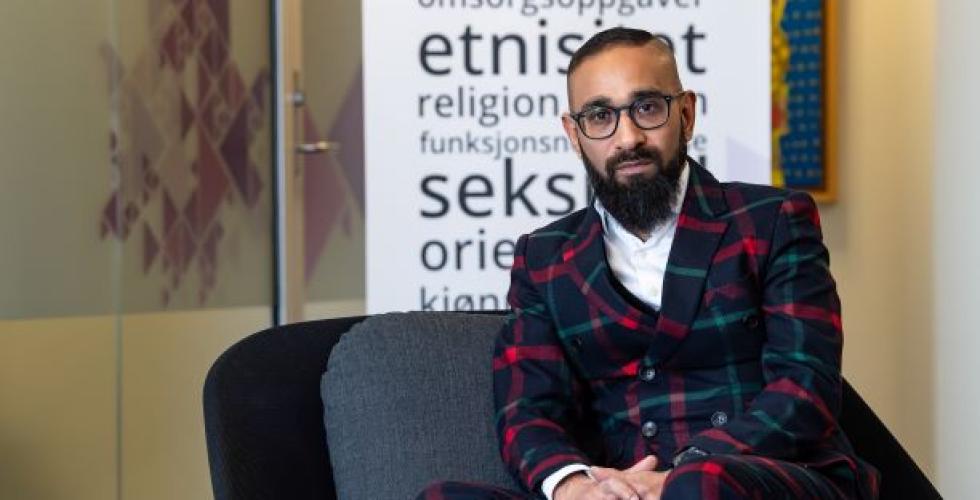International researchers are paving the way to greater diversity
Does a greater number of foreign researchers in Norwegian academia create a more inclusive work environment for everyone?
The research sector is currently debating Internationalisation: some believe there’s too little, others too much. Could it also be that internationalising the research sector generates greater barriers for some groups than for others?
Could international recruitment to research positions in Norway hinder Norwegian-born to immigrant parents from pursuing a research career? Does the research sector's focus on internationalisation mean that we are losing homegrown talent, including Norwegian-born to immigrant parents?
Read the news article More researchers with immigrant backgrounds
In this article, which is part of the series "Norwegian-born researchers with immigrant parents", we asked three individuals to reflect on the relationship between internationalisation and the recruitment of Norwegian-born researchers with immigrant parents.
We put these questions to a professor who moved to Norway 17 years ago and has become involved in the debate on internationalisation, a researcher at the Department of Informatics who came to Norway as a child, and a master's student at the same faculty.
Less than one per cent of Norwegian-born researchers with immigrant parents work in academia, while the group is overrepresented in higher education.
This third article explores the topics of the internationalisation of academia and different experiences with internationalisation and diversity. We ask, for example, whether internationalisation is an obstacle to the careers of Norwegian-born researchers with immigrant parents.
In this series of articles, Kifinfo focuses on Norwegian-born researchers with immigrant parents who have taken the step into a research career. The aim is to hear about their experiences of choosing a research career, their experiences of working in academia and whether they have any advice for the research sector’s work towards a more inclusive academia.
Read the two previous news articles in this series: Minorities in academia: “Being Norwegian is not a buffer against discrimination” and: “I never dreamed of becoming a researcher”
Three reasons for few descendants of immigrants in research
Professor Malcolm Langford at the Faculty of Law, University of Oslo, believes that the low number of Norwegian-born researchers with an immigrant background is due to three main factors: lack of networks, discrimination and family considerations, which make an often lower paid and less predictable career in research a less rational choice.
Langford co-founded the Forum for International Researchers in Oslo (FIRO) in 2018. One of its goals is to engage in debates about internationalisation, integration and diversity in academia.
“What’s your view on discrimination as a cause?”
"Research shows there is discrimination when hiring in both the public and private sectors, and there’s little reason to believe academia is any different," says Langford.
At his own faculty, social reproduction has long existed among students and researchers. In that context, it means a large proportion of law students and researchers come from families of lawyers. However, Langford explains that the proportion of law students whose parents are lawyers has fallen sharply.
“Still, it's perhaps mostly about class," he says.
He points out that the unpredictability of a research career makes it less risky if you come from a middle-class background than if you come from a lower social background.
“You’re more likely to feel a sense of belonging and build better networks in a sector dominated by the middle class.”
Langford himself grew up in a lower-middle-class family, in Papua New Guinea and Australia.

A generational shift at the department
Omid Mirmotahari came to Norway with his Iranian parents when he was six years old. He completed his entire schooling in Norway. In addition to there being a greater number of visible minorities in academia, he also sees another change:
"There is less racism now than there used to be," says Mirmotahari, Associate Professor at the Department of Informatics at the University of Oslo.
He describes how it felt to constantly receive comments about how well he spoke Norwegian – due to his foreign-sounding name – and the time he was interviewed for a university post and was asked: "How do you relate to female leaders?"
“What if the interviewers asked all the men who were interviewed the same question, as a way to prevent gender discrimination?”
“The context made it clear that the question was based on assumptions about my cultural background," says Mirmotahari.
“My experiences in higher education have been challenging but also educational. I've had to work hard to get to where I am today,” he says.
Mirmotahari also talks about a generational shift at the Department of Informatics. While it used to be a fairly homogeneous group in terms of gender (men), ethnicity (white) and social background (middle class), he believes the group is now more diverse.
“The problem is recruitment”
Mirmotahari has been involved in the recruitment process for research positions, and he believes there is a problem when it comes to recruiting Norwegian-born applicants.
“There are many strong foreign applicants, but little interest from applicants in Norway – they just don’t apply. Why is that? Are we not good enough or is it not lucrative”, Mirmotahari asks, then answers his own question:
"It's often the case that you spend four or five years doing a PhD, and then you aren’t sure what happens next. You don't even know if you'll be able to continue in academia.”
Mirmotahari explains that almost all applications for research fellowship positions at the Department of Informatics come from foreign applicants.
“I believe it's because it's more lucrative to work outside academia. If a master’s graduate can receive a starting salary of over NOK 800,000, many would rather commercialise their ideas than refine them in academia," he says.
“Do international applicants often outcompete Norwegian applicants?”
“Even though a great deal of teaching is in English, researchers recruited from Norway have an advantage because they understand Norwegian and the Norwegian system. And we know the quality of our own graduates, so that's also to their advantage. On the other hand, many international applicants have often published 15 research articles, while local applicants may have only written only a few," he says.
Mirmotahari believes international researchers may also have the advantage of a broader (international) network and having done more exchanges with others.
When asked why he wants to be a researcher, he replies with a smile:
“I did well and I’m a very engaged and inquisitive person.”

“The more mixed, the better”
Mirmotahari supervises many master's students, including Shahvez Mahmood. The master's student does not see internationalisation in academia as a problem, but as a positive:
“Having more international researchers in Norway is beneficial to those of us who are Norwegian-born to immigrant parents. Their presence may well reduce prejudices against us.”
Mahmood explains his experience in the following way: If more people seem "different" or "foreign", it becomes less strange to stand out from the majority.
“International researchers can be role models for everyone, even if they don't share the same background," he says.
Mahmood points out that he is in the IT sector – both through his work and his master's studies in informatics. It is a diverse sector, and he does not feel like a minority having a Norwegian-Pakistani background.
"The IT sector is so globalised. It's common to have people from many countries and cultures, and many developers are recruited from outside Norway," says Mahmood.
Mahmood believes it comes down to the diversity of different disciplines and sectors. He cites the financial sector as a group where not everyone may not have the same opportunities.
“The more mixed, the better,” says Mahmood.
Role models
Mahmood is keen to pass on what he has learnt.
“I felt it was particularly important to be a role model during my bachelor's degree. I wanted to help those who were newer to the study programme, to pass on the info I’d received from others so they could learn from my mistakes.”
Omid Mirmotahari, Mahmood's supervisor, talks about having to forge one’s own path.
“Did you not have any role models?”
"No, there haven't been many role models, but I'm keen to be a good role model for others," he says.
Malcolm Langford believes that minority role models are not only important for students, but also for researchers without a minority background.
"Having colleagues who look different from you changes how you view students who look different, and that affects how you bond with them," he says.
Langford believes it is crucial which students we see as future researchers and who we invite into various networks. This can – whether consciously or not – impact the representation of different genders as well as ethnic and social backgrounds.
“We don't need to be über-woke to work on treating people equally. Seeing someone who stands out and breaks stereotypes helps us to do the same.”
International competition
"Among other things, the Forum for International Researchers in Oslo (FIRO) focuses on diversity among international researchers in Norway," says Malcolm Langford, referring to a Swedish article on the topic.
He explains that many international researchers may be minorities in their own country, so it is important not to automatically make a distinction between international researchers and those with a minority background in Norway.
At the same time, Langford recognises the challenges and paradoxes when it comes to recruitment:
“Open, meritocratic processes have been vital for female researchers since the 1990s and for international researchers since the 2000s, but in some disciplines, this may have come at the expense of recruiting Norwegian researchers with immigrant backgrounds.”
Mirmotahari believes that those who have completed higher education in Norway may stand a better chance in recruitment processes, but also still believes candidates with ethnic Norwegian names have an advantage.
"Norwegian names and where candidates earned their PhD often carry weight," he says.
Associate Professor Mirmotahari suggests a solution to help more people qualify for PhDs:
“Some kind of ‘waiting salary’ could provide more predictability for students, as it can often take a whole year before a new master’s graduate has the opportunity to take a PhD.”
Mirmotahari can envision, for example, offering the students with the ten best master's theses a recruitment position for six months to a year.
“It could work like this: ‘We have got a strong student here, and we know there’s a project coming up in the near future. How do we bridge the gap?’”
The Faculty of Mathematics and Natural Sciences gives research assistant posts as an example of a recruitment position, but that they do not have a "waiting salary" scheme.
Translated by Totaltekst.
Figures from the Faculty of Mathematics and Natural Sciences at the University of Oslo.
Gender distribution at the faculty from 2024 (rounded):
- Bachelor’s degree students: 43 per cent women, 57 per cent men
- Master’s degree students: 44 per cent women, 56 per cent men
- PhD students: 45 per cent women, 55 per cent men
- Postdoctoral fellows: 35 per cent women, 65 per cent men
- Researchers: 31 per cent women, 69 per cent men
- Associate professors: 36 per cent women, 65 per cent men
- Professors: 29 per cent women, 71 per cent men
Gender distribution at the Department of Informatics from 2024:
- Bachelor’s degree students: 41 per cent women, 59 per cent men
- Master’s degree students: 30 per cent women, 70 per cent men
- PhD students: 39 per cent women, 61 per cent men
- Postdoctoral fellows: 35 per cent women, 65 per cent men
- Researchers: 12 per cent women, 88 per cent men
- Associate professors: 33 per cent women, 67 per cent men
- Professors: 20 per cent women, 80 per cent men
The faculty does not have information about the ethnic background of students.
All academic positions at the University of Oslo are advertised internationally on the European portal for researchers EURAXESS Jobs.
The definition of recruitment positions is research fellow, post doctoral fellow and research assistant.
Source: Faculty of Mathematics and Natural Science / Database for Statistics on Higher Education (DBH)
In the article series "Norwegian-born researchers with immigrant parents", we want to explore the opportunities and barriers to this group taking a doctorate and pursuing a research career. Our starting point was the statistics: in 2023, less than one per cent – 276 people out of a research workforce of more than 40,000 – belonged to this group.
In this article, we wanted to look at internationalisation in academia in the context of "national diversity" – raising the question of whether it comes at the expense of Norwegian-born individuals with immigrant parents and their opportunities as researchers.
Read, for example, the article by Mariel Støen, professor at the University of Oslo and member of the Forum for International Researchers in Oslo (FIRO): Hvorfor diskriminerer vi våre egne til postdoktorstillingene? (Why do we discriminate against our own people when it comes to postdoctoral positions?) (Uniforum – in Norwegian) and from the Young Academy of Norway: Det mangfoldige akademiet (The diverse academy) (Khrono – in Norwegian).
Please contact us at kifinfo@kilden.forskningsradet.no if you would like to participate in an interview for the article series, or if you would like to write an opinion piece on the topic.
See also Forskningspolitikk's article on research education in 2023:
- 56 per cent women among new PhD candidates
- 44 per cent foreign students among new PhD candidates
- After six years, 69 per cent of men had graduated, 63 per cent of women (due to e.g. leaves of absence)
See more on our statistics pages, particularly the diversity statistics










